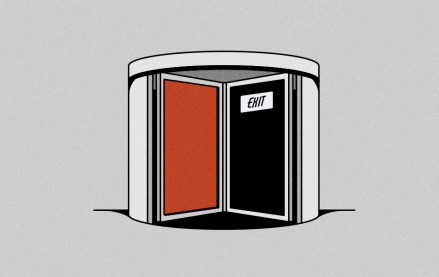‘People get too stuck on their job title’: Confessions of an agency-based creator on challenges of the creator economy

This article is part of our Confessions series, in which we trade anonymity for candor to get an unvarnished look at the people, processes and problems inside the industry. More from the series →
Advertising industry professionals have been eyeing the creator economy — not only to understand it for their work with clients but also for themselves, as more agency employees consider becoming creators.
Agency-based creators aren’t limited to the creative departments, either. Some employees outside of creative, like one marketing associate who works for a digital agency, have dabbled in becoming creators too. “It turns you into a hybrid,” said the marketing associate. “You’re a copywriter, you’re an art director, you’re an editor.”
In the latest edition of Digiday’s Confessions series, in which we trade anonymity for candor, we hear from this marketing associate and creator about the difficulty of the strictly-defined lanes that exist at agencies, why today’s social media landscape requires more flexibility than in the past and what she wishes the agency world understood about the creator economy.
This interview has been lightly edited and condensed for clarity.
You said as a creator you become a “hybrid,” doing the work of lots of roles at once. That’s not how agencies work. Is it tricky for you to balance respecting agency swim lanes with the creator mindset?
You do have to go through a heavy process with multiple layers [in agencies]. I think a lot of times people get too stuck on their job title. It’s like, ‘Ok, well I’m the copywriter. I should only touch this.’ Or, ‘I’m the art director, I should only touch this.’ When people get stuck on their job titles it can delay things a lot because it has to get past this person and that person. It’s just so many steps. I think that’s going to be a challenge for our industry.
What makes you say that?
Brands aren’t going to like that [guardrail] approach as much anymore. They want to be more timely with things and they’re going to continue to build out their in-house teams more [to be able to act quickly]. The ways in which brands and agencies partner will have to shift to keep up with [the pace of change]. That mostly refers to social media [work] … people are spending their entire day on their phones so it’s the most important touchpoint for brands to reach their audience.
Brands can often be the ones to slow things down. They’re pretty slow-moving and rigid in their process, even more so than agencies.
It’s hard when you have a client who is very traditional. That’s the other challenge. A lot of huge brands are stuck doing something a certain way because [of their structure] with one person who reports to another person and thinking that’s just how they have to do it. It comes to a point of, how do you convince a brand to work more hand-in-hand? A lot of times, I see we’re handed briefs and we have to do something one way or the other. It all comes down to what kind of client you’re working with because the clients that are more [willing to take risks] and understand the world of social media, it’s easier to speak up and say, ‘Hey we should do this approach.’
We’ve spoken to some advertising industry professionals about their decision to leave the ad world to be full-time creators. Why are you staying at an agency?
I don’t get a lot of satisfaction from putting my personal self out there. That’s not where I want to express my creativity. I really enjoy working with brands. Being a creator, it’s less about a personal platform [for me] and more about [understanding] the types of content to deliver for brands. But there have been multiple times where I’m like, ‘Well, why don’t I just become a full-time content creator and talk about the advertising landscape.’ But I think we’re going to see it become normal for people to be creators and work full-time jobs.
We’ve heard from creators who’ve had to go back to 9-to-5 jobs because being a creator hasn’t panned out or they’ve been burnt out from doing it. It seems like there’s an artifice sometimes to content from creators who have left 9-to-5s and say that anyone can do it. Does that factor in?
Creators make it seem so easy and it is so hard. It’s hard work to be consistent. The content, we consume it and digest it so quickly, that it looks so flawless and perfectly executed. I always like to tell people who are mad about someone being on Forbes’ ’30 Under 30′ for being a creator, do you know how hard it is to be so consistent and post videos, edit videos every day? I say to try it, go out and make one video. It’s really hard. It’s not easy.
It’s also a difficult economy at the moment. Things are getting more expensive and now with the tariffs that will continue. I do wonder how creators are going to navigate that.
Yeah, you don’t want to see another unboxing video. We’re [as a culture] tired of being sold to 24/7 so it comes down to who [brands and agencies] are going to work with and focusing on more creators than influencers. Are you doing it uniquely? Are you doing something new? Or are you just doing the traditional playbook? Brands need to be a little bit more impactful with who they’re working with and make sure the types of content and the output is going to be something consumers value.
Does having the perspective of both a creator and an agency employee make you more critical of the influencer or creator content that you see?
One-hundred percent. I’m always questioning the content that I see. Working in traditional advertising, there’s a heavy push for purpose and meaning in advertising. It’s like, ‘This campaign, it has to be really, really strong. We need to know why it needs to be there.’ Yes, I get that. But people try to apply that thinking to social media [and creator work]. While it’s true [it should be meaningful], we’re also consuming [social content] at such a different rate. It doesn’t have to be this idea that’s going to change the world. We as advertisers need to be okay with if we have a stupid idea it’s okay as long as it adds value to the brand. It doesn’t need to be as hard-hitting as traditional ads you are used to working on. And it can’t take the timeline of a traditional ad.
More in Marketing

Pitch deck: How Amazon is recasting Twitch as a core part of its CTV pitch
Amazon is positioning Twitch as a defining asset in its CTV ambitions.

Netflix transforms former mall department stores into experiential venues
The location in Dallas opens this week, and one at the King of Prussia mall near Philadelphia opened last month.

Future of Marketing Briefing: AI has created a new talent paradox in programmatic agencies
The job isn’t execution anymore. AI handles that. The job is judgement.








